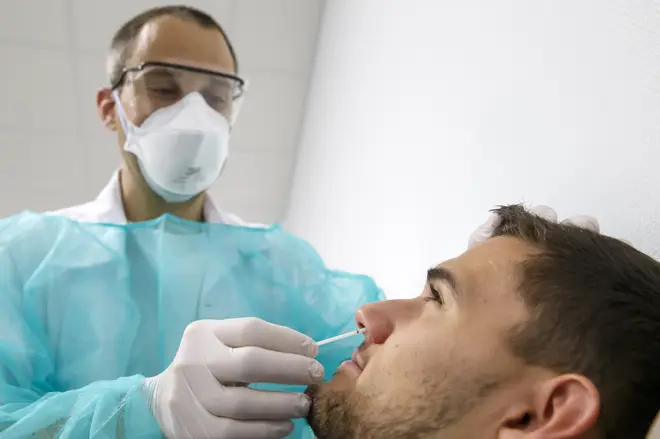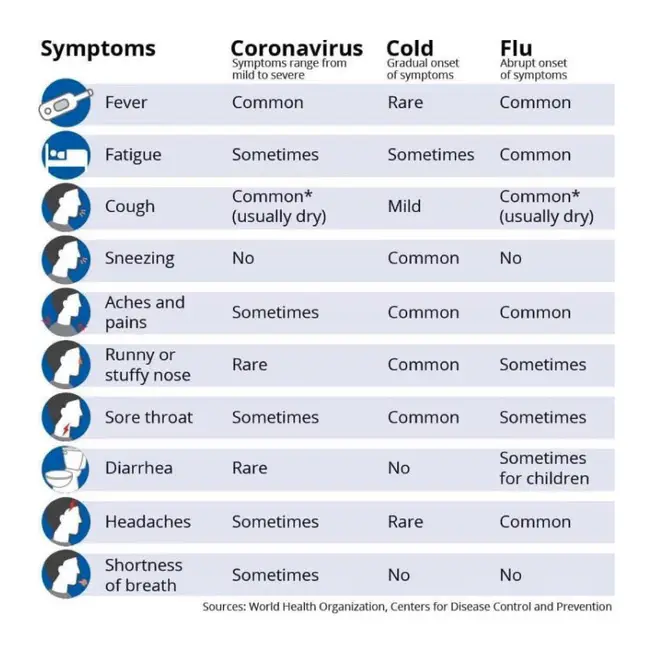
Tom Swarbrick 4pm - 6pm
10 March 2020, 13:48 | Updated: 7 June 2023, 08:56

Different people who have coronavirus get different symptoms. Here's a helpful guide to what symptoms are most likely with COVID-19.
There are two symptoms that the majority of people who contract coronavirus get: a fever and a dry cough.
Other symptoms that some people get are extreme fatigue, mucus and a shortage of breath.
It is worth remembering that the death rate for coronavirus is around 1%, which means that 99% of people who contract COVID-19 will recover.

After a study of 55,000 confirmed cases in Wuhan, China, they found patients had the following symptoms.
Fever: 87.9% of cases
Dry cough: 67.7%
Fatigue: 38.1%
Mucus/sputum production: 33.4%
Shortness of breath: 18.6%
Sore throat: 13.9%
Headache: 13.6%)
Muscle or joint pain (myalgia): 14.8%
Chills: 11.4%
Nausea or vomiting: 5.0%
Nasal congestion: 4.8%
Diarrhea: 3.7%
Coughing up blood (hemoptysis): 0.9%
Red eyes (conjunctival congestion): 0.8%

The graphic above shows the difference in symptoms between coronavirus and having the flu or a cold.
If you have coronavirus, you are likely to have a fever, dry cough and feeling very fatigued.
If you have a cold, you are likely to sneeze, have a runny or blocked nose and a sore throat.
If you have fly, you are likely to have a fever, fatigue, headache, a cough and aches and pains.
The majority of people who contract coronavirus make a full recovery. However, the elderly and infirm are most at risk from the virus.
Interestingly, children don't seem to show symptoms from Covid-19 and there are few cases of children under 10 being severely ill with the virus. However, they could spread it to adults, which could make them ill.
According to the latest data from the China Centre for Disease Control, he mortality rate at different ages is:
Age 10-50: 0.3%
Age 51-60: 1.3%
Age 61-70: 3.6%
Age 71-80: 8.0%
Age 81-90: 14.8%
The risk climbs with older people because they often have other diseases or conditions which worsen coronavirus.